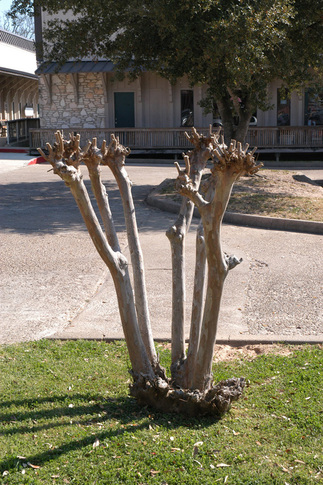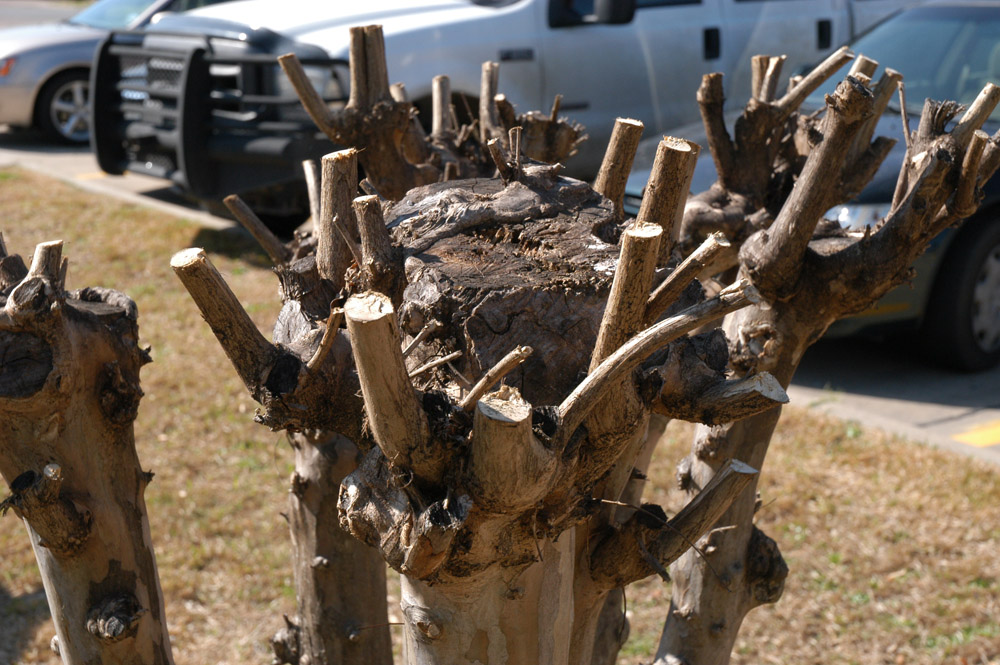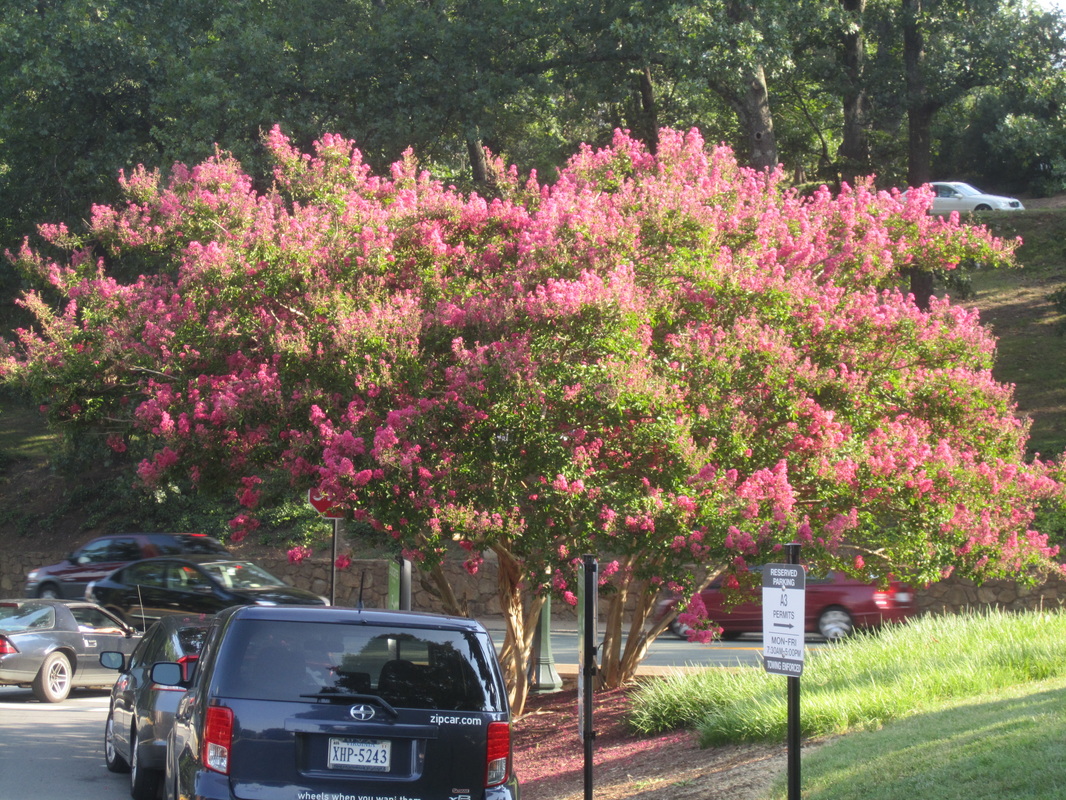Stop the Crepe Murder |
| But for some reason, a mysterious reason that I haven’t quite solved, the majority of the "gardeners" (and ALL of the landscape crews) in Texas have made it a horrid ritual of butchering them. Clip this portion of the article out and take it directly to your spouse, maintenance person, or nurseryman. I know of NO educated horticulturist or arborist that endorses the practice of topping crapemyrtles or any ornamental trees for that matter. Go ahead. Pick up the phone. Call Neil Sperry. Call Dr. Bill Welch. Call the National Arboretum! You WILL NOT find any plant expert that will condone or recommend this practice. Then why do we do it? Actually I have several theories. But I’m not going to share any of them with you for fear that you might some how feel justified in your arboreal disfigurement. |
This practice may look appropriate behind a chain link fence in a Mississippi trailer park, but I can assure you it is not appropriate for any landscape that you intend to be admired. Some of the most beautiful homes in Texas are now marred by embarrassing crapemyrtles. On the other hand, take a trip to Baton Rough, Mobile, or Charleston. They have an enduring admiration for their beautiful crapemyrtles and wouldn’t think of undoing what nature has perfected.
In my personal opinion, any landscape maintenance firm involved in this practice should be immediately fired! They are wasting your time and money and obviously don’t care what’s best for your plants or your landscape. If they took the time to educate themselves through seminars and reading, they would earn your money through more horticulturally sound practices.
I’m quite sure that the few of you left reading this soapbox diatribe can’t wait to tell me what many have in the past. "But Greg, they got to big!" Much better to cut it to the ground and start over, or pull it out entirely, than to maim it. Most folks don’t realize (but should) that there are many, many, cultivars of crapemyrtles that have an ultimate height range from 3 feet to 30 feet. For heavens sakes, don’t plant a 30 foot crapemyrtle in a space designed for a 10 foot one.
Thanks to King’s Nursery and Greenleaf Nursery, I have planted a collection of commercially available crapemyrtle cultivars in the commuter parking lot on University Drive on the SFA Univsersity Campus. This will be one of the only places in the state where gardeners can come see what each named cultivar is SUPPOSED to look like, a sort of "abuse free" zone if you will. They won’t be sprayed, irrigated, or pruned. They’ll just stand there minding their own business, looking pretty in pink (and other colors as well, of course).
There have been articles on this same subject in Southern Living, Neil Sperry’s Gardens, and other southern magazines and newspapers. Unfortunately, the problem here seems to be getting exponentially worse each year. I can only assume that gardeners in Texas either don’t read, or don’t care. Please prove me wrong. STOP THE CRAPE MURDER!
http://aggie-horticulture.tamu.edu/archives/parsons/publications/stopthecrape.html
Authors
Kathy and Alex have combined experience of over 25 years, and offer their expertise here.
Archives
February 2019
January 2019
April 2018
January 2018
September 2017
July 2017
April 2017
February 2017
October 2016
July 2016
June 2016
May 2016
April 2016
March 2016
February 2016
Categories
All
Annuals
Care And Feeding
Conifers
Containter Gardening
DIY
Evergreen
Food Crops
Funny
Garden Hacks
Gardening
Grasses
Holiday
Landscaping
Lawns
Native Plants
Oklahoma
Organics
Perennials
Pests
Planting
Plant Wisdom News
Products
Propagation
Pruning
Recipes
Roses
Shrubs
Sustainable
Trees
Vegetables
Weather



 RSS Feed
RSS Feed